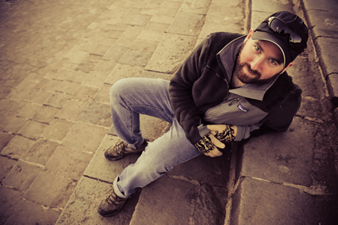Thinking back to all the times that I visited New York City as a child, one image always comes into my mind: landmark clocks. The city that never sleeps is famous for monitoring time like no other, simply because time is a priceless commodity. As the clock strikes 7 in the morning, the streets become flooded with busy people, rushing to their jobs, schools, or to sightsee. But even as the clock strikes the same hour at night and continues to tick, the city sees just as much commotion and movement.
New Yorkers are characteristic for being fast and impatient. When each second represents money either earned or lost, time is of high value and importance. It is not surprising to see clocks on the main streets and avenues of New York. Many of these buildings, built before the invention of electronic devices, had a clock incorporated into their structure. It was convenient for the passing pedestrians to look up and identify the hour.
Times have changed and the world developed, ushering New York along the path of leadership in many global functions. As the financial capital, New York City serves as the bookkeeper of international trade. The iconic 5th Avenue is home to not only a plethora of different clocks that run in the eastern standard time zone, but also a great number that represent all the worldwide time zones.
Perhaps the most remarkable feature of time in New York City is the ways in which it is honored. Clocks here are not merely thin hands and dull numbers, but a symbol of strength, perpetuity, and even celebration. Oftentimes a clock is the focal point of an entire building, as magnificent as the other parts of it may be. Both historic structures and landmarks of the city, the Grand Central Terminal and Helmsley Building flaunt their beautiful Beaux architecture with clocks as their central pieces. Grand Central Terminal, built in the late 19th century, displays a golden clock upon which the winged Mercury, grasping a sword in his muscular hand, stands prevalent amongst Roman gods and cornucopias of wealth. Likewise, the clock in the center of the Helmsley Building is adorned by the figures of the mighty Jove and the delicate Juno, seated as the symbolic connection between men and women. In a bigger scheme, these clocks serve as a portal between the rich homogeneous culture of the classical Roman civilization and the heterogeneous identity of New York City.
This multitude of clocks that stand on busy streets watch over the whizzing crowds of people, taxis, and tour buses. The thousands of ticking hands mark moments in history as they are made and inspire us to search into our past. They have witnessed New York in its creation, its current booming splendor, and will continue to look upon the city’s developments in the years to come.
Understanding the significance of clocks in New York City culture, I knew that they would be the subjects of my street photography project. I was unaware, however, that the different streets and avenues of Manhattan would dramatically differ in the amount of clocks that they contained. I first walked east along 42nd street and was unpleasantly surprised when I did not encounter any clocks, let alone noteworthy ones. Shoulders slumped, I turned onto 5th avenue in search of my subject. Within a few minutes, I turned my attention to the street running to the right and saw a massive building in the distance. Curiosity led me towards it, and I soon discovered that it was Grand Central Station. The building was a stunning sight amongst the lean skyscrapers that filled the road before it, yet I couldn’t see a clock. I approached a police officer that was directing traffic and asked if he knew of any big clocks in the nearby area. He game me a smirk. “Big what?”
“Big clocks”, I spoke up.
“Ah, there’s one around the corner”, his finger pointed to where I should go. As I turned that corner, a smile crept from my left check to my right. I saw my first clock. It was almost like stalking prey, I must admit. I ended up taking about 30 pictures of it, slowly moving from one side of the street to the other and changing my camera from landscape to portrait position. I sometimes stooped down to one knee to see how the building looked like from my viewfinder. If I was going to photograph something so amazing, I had to make sure that the angle I chose did it justice. Surprisingly, most people didn’t mind when my camera was pointed at them or when I stood in the middle of the street and blocked their way.
The biggest learning experience of the day was realizing that New Yorkers are surprisingly nice people. There were several instances when I got lost, and all were happy to direct me back to 5th avenue. Especially pleasant was my conversation with a city worker at Rockefeller Center. When I reached the ice-rink, I felt a bit bombarded by the decorations, beaming tourists, and screaming fan girls across the street at the NBC building. The only place that looked relatively less crowded was behind the Christmas tree, as it was still being set up and not much of a sight to behold. I found an idle city worker there and asked him where I could find a big clock.
“Do you need the time?” he looked puzzled. I explained to him that I was photographing big clocks, and a wave of understanding came over his face. Taking some time to think and look around him, it was evident that he was genuinely interested in helping me. “Oh, there’s one!” he eagerly exclaimed when he saw a clock impressed into a nearby building.
Grateful, I continued on my quest for clocks. Within several hours, I had photographed more than I ever expected to see and turned towards Baruch. Walking down Park Avenue, with my camera dangling off my neck, I was approached by a stranger. A fairly young man with a thick southern accent, he asked me if I was also walking towards the Empire State Building. He assumed I was a tourist, what with my camera and large book bag.
I shook my head. “No, I’m sorry.” I continued to walk ahead while he attempted to understand the map on his iPhone.
A few seconds passed and the stranger caught up to me again. “So what are you in New York City for?” he had a kind smile on his face.
“I’m doing a photography project for school. Taking pictures of clocks.” I gave a toothy grin.
“Oh, that’s awesome. Are you going to do photography when you’re done?”
“I’m not planning on being a photographer, this is just a small project for one of my classes.”
His smile subsided. “But you are planning on going to college, right?”
So this stranger expressed concern about my education. In that refreshing moment, I finally believed that the world was not a dark and lonely place. It, in fact, contained many people that cared about the well being of others, even if they didn’t know them on a personal level. It was a heartwarming realization.
Aside from pleasantly interacting with strangers, I became more aware of the challenges that photographers face. Before I shot a photo, I had to consider the amount of natural light that hit my subject and how far I stood from it. Although my focus was on clocks, it was important for me to consider all the other factors that I wanted to include in my photograph.
GDE Error: Unable to load requested profile.











































